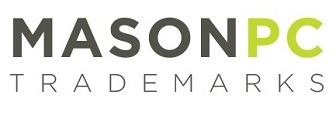Trademarks are territorial by nature. This means that protection is achieved and enforceable on a country-specific basis.For example, a Canadian trademark registration provides exclusivity in Canada, whereas a Jamaican trademark registration will do the same in Jamaica. They are not interchangeable.
For example, a Canadian trademark registration provides exclusivity in Canada, whereas a Jamaican trademark registration will do the same in Jamaica. They are not interchangeable.
Similarly, a Canadian trademark registration will only apply to protect your rights in Canada. If you plan on exporting goods and/or services to other countries, or to manufacture there, then it is time to consider international trademark protection.
The steps below will help you to navigate your route to protecting your brand as a trademark internationally

- Clear your Brand
This is a very important first step that should never be overlooked.
It will be prudent for a Canadian business to commission a full and comprehensive trademark clearance search before adopting a brand for use in commerce. Too often, business owners adopt and invest in a brand, only to realize, later on, that it is already in use, or is too similar to someone else’s trademark. An experienced Canadian trademark lawyer will search the Canadian trademark register to determine if there are any identical or confusingly similar trademarks. Additionally, a host of other resources will be examined to ascertain whether there are any unregistered common law rights that may be of concern.
Ideally, a comprehensive trademark search will have been conducted prior to adopting the brand as a trademark. However, it will still be a good idea to conduct a search against a brand that is already in use, particularly where the brand owner is unsure of prior rights and exclusivity.
It will also be a good idea to consider searches in other countries where you would like to register your trademark. Your Canadian counsel can help to guide you as to the nature and extent of these country searches. You will also want to consider how your mark will be translated or received in other countries based on linguistic and cultural considerations.
The importance of clearing your brand can never be overstated. After all, efforts to register a trademark internationally will be futile if the mark is not available for your use and registration at home or abroad.
2. Register your Brand as a Trademark with the Canadian Intellectual Property Office (CIPO)
As a Canadian-based business, it will be advantageous to file a trademark application in Canada as a precursor to registering overseas. It is typically easy to get the filing process underway with the help of expert Canadian counsel.

After you have cleared your mark, your lawyer will help you to prepare specifications of goods and services and to claim the appropriate international classes. This is important since Canadian law requires a fairly high level of specificity and proper classification under the Nice classification system.
Once your filing particulars are in order, your lawyer will file your trademark application with CIPO.
The date of your Canadian filing is very important to note. This will be the date from which your ultimate Canadian rights begin once you have secured registration. Additionally, your Canadian filing date will be considered the date of filing in any other Paris Convention country around the world, once you file an application there within six months of filing in Canada.
For example, if you filed your Canadian application on November 1, 2021, and later filed in the United States on December 5, 2021, your filing date for the United States application will be noted as November 1, 2021. This means that your US application will enjoy priority rights over any other application, for the same mark, that was filed in the US after November 1, 2021. This six-month priority window is a key advantage that Canadian businesses should take advantage of as they develop their international filing strategies.
3. Review Your International Needs
You should consider the countries in which you intend to grow.
Begin by looking at where you are currently doing business, and where you plan to expand in the future. If you run an online business, it will be a great idea to conduct market research to determine where your current customers are, and where they are likely to be in the future. Your Canadian trademark counsel may also recommend defensive trademark applications in first-to-file countries, such as China, to protect your trademark against bad faith registration by unassociated third parties.
Having gone through this process of deliberation, you will have collated a list of countries where you would like your trademark to be protected. Thereafter, your trademark counsel will likely provide you with a cost estimate to protect your trademark in all of the countries of interest. From there, the list can be culled based on a priority of interest and budgetary concerns.
You can book a free consult when you’re ready to protect your brand internationally.
4. Register Your Trademark Internationally
There are two options at this stage.
The first is to apply individually to the trademark office in each country where you would like your trademark to be protected. This will likely require you to retain counsel individually in each territory. As you can imagine, this could potentially be cost-intensive and time-consuming. The upside, however, is that local counsel will be able to tailor your application particulars to meet the legal requirements in each country. This may be the right route for you if your trademark application is not foreseeably smooth sailing (for eg. your specifications of goods are not very specific or registrability objections are likely). Also, you might opt for this option if you only plan to register in a handful of countries (up to three).
The second option is to file an application for international registration of your trademark through the Madrid Protocol, and then designate the countries in which you would like your international registration to extend. The Madrid Protocol offers Canadian businesses the possibility of obtaining trademark protection in over one hundred countries by filing one single application with the World Intellectual Property Office. You must however have filed a Canadian trademark application or have secured a Canadian trademark registration before you can use the Madrid Protocol system.

If you plan on protecting your trademark in several different countries, then this option might be right for you. In this case, it would certainly be more efficient in terms of cost and time at the initial filing stage. Bear in mind, however, that your application will be examined according to local laws in every single country you designate, and filing through the Madrid Protocol system does not guarantee acceptance in each and every country. If you foresee that your application might be problematic (eg. potential registrability issues), you should discuss with your Canadian counsel whether this option is right for you.
As discussed above, it will be a good idea to file internationally within six months of your filing date in Canada. In this case, the subsequent country applications will retain your earlier Canadian filing date, provided that they are Paris Convention signatory countries.
5. Monitor the Use of Your Trademark Locally and Internationally
So, you have secured trademark registration locally, in Canada, and otherwise internationally. You should immediately begin to use the ® symbol as public communication that your brand is registered as a trademark. Importantly, you should consistently monitor your trademark online, and in the local marketplace where your products and/or services are sold. Consult with your trademark lawyer immediately if you discover any unauthorized use of your trademark or one that is too similar. In this case, your trademark counsel will advise you of any action that you will need to take.
Registering your brand as a trademark in Canada is an important first step for Canadian businesses. From there, an experienced trademark lawyer can assist you in developing an international trademark portfolio based on the needs of your business. Upon securing registration, consistent brand monitoring is key to sustaining the uniqueness in your brand and the rights that you have developed therein.


